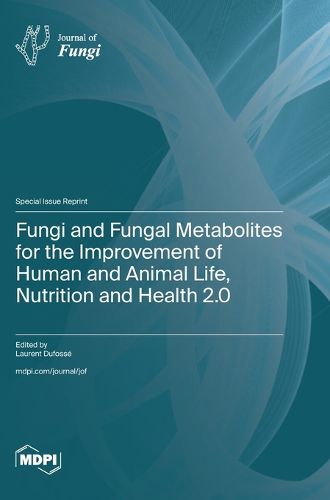Readings Newsletter
Become a Readings Member to make your shopping experience even easier.
Sign in or sign up for free!
You’re not far away from qualifying for FREE standard shipping within Australia
You’ve qualified for FREE standard shipping within Australia
The cart is loading…






This title is printed to order. This book may have been self-published. If so, we cannot guarantee the quality of the content. In the main most books will have gone through the editing process however some may not. We therefore suggest that you be aware of this before ordering this book. If in doubt check either the author or publisher’s details as we are unable to accept any returns unless they are faulty. Please contact us if you have any questions.
Macrofungi and filamentous fungi constitute a large portfolio of proteins, lipids, vitamins, minerals, oligo elements, pigments, colorants, bioactive compounds, antibiotics, pharmaceuticals, etc. For example, industrially important enzymes and microbial biomass proteins have been produced from fungi for more than 50 years. Some start-ups convert byproducts and side streams rich in carbohydrates into a protein-rich fungal biomass. This biomass can then be processed into a vegan meat substitute for food applications. In recent years, there has also been a significant increase, in fact, a significant revival in the number of publications in the international literature dealing with the production of lipids by microbial sources (i.e., the single-cell oils (SCO) that are produced by the so-called "oleaginous" microorganisms, including "oleaginous" fungi such as zygomycete species, e.g., Cunninghamella echinulata and Mortierella isabellina). Fungi are potential sources of polyunsaturated fatty acids (PUFAs), as these microorganisms can accumulate large amounts of high-valued PUFAs, such as gamma-linolenic acid (GLA) and arachidonic acid (ARA).
$9.00 standard shipping within Australia
FREE standard shipping within Australia for orders over $100.00
Express & International shipping calculated at checkout
This title is printed to order. This book may have been self-published. If so, we cannot guarantee the quality of the content. In the main most books will have gone through the editing process however some may not. We therefore suggest that you be aware of this before ordering this book. If in doubt check either the author or publisher’s details as we are unable to accept any returns unless they are faulty. Please contact us if you have any questions.
Macrofungi and filamentous fungi constitute a large portfolio of proteins, lipids, vitamins, minerals, oligo elements, pigments, colorants, bioactive compounds, antibiotics, pharmaceuticals, etc. For example, industrially important enzymes and microbial biomass proteins have been produced from fungi for more than 50 years. Some start-ups convert byproducts and side streams rich in carbohydrates into a protein-rich fungal biomass. This biomass can then be processed into a vegan meat substitute for food applications. In recent years, there has also been a significant increase, in fact, a significant revival in the number of publications in the international literature dealing with the production of lipids by microbial sources (i.e., the single-cell oils (SCO) that are produced by the so-called "oleaginous" microorganisms, including "oleaginous" fungi such as zygomycete species, e.g., Cunninghamella echinulata and Mortierella isabellina). Fungi are potential sources of polyunsaturated fatty acids (PUFAs), as these microorganisms can accumulate large amounts of high-valued PUFAs, such as gamma-linolenic acid (GLA) and arachidonic acid (ARA).